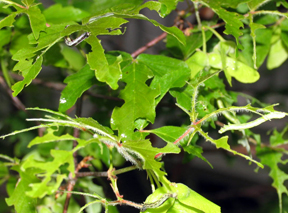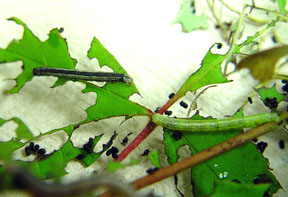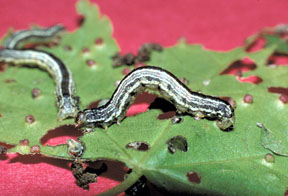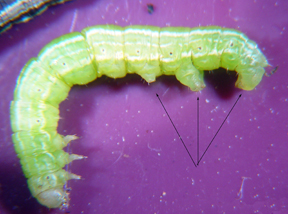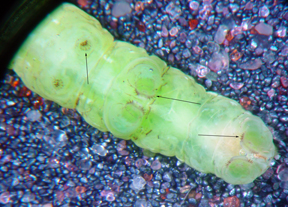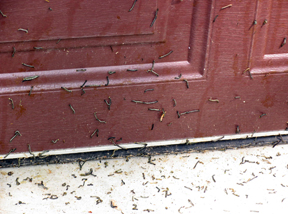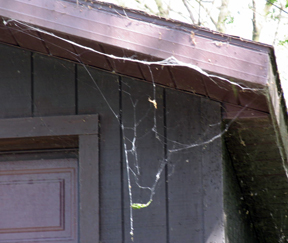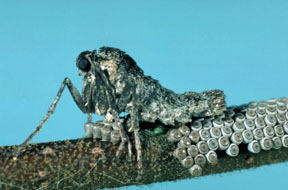Fall cankerworms: Another shade tree pest makes an appearance this spring
Editor’s note: This article is from the archives of the MSU Crop Advisory Team Alerts. Check the label of any pesticide referenced to ensure your use is included.
Two clients from East Lansing brought in caterpillar samples they had collected from their shade trees. One said he had thousands of them crawling about on his driveway and they were creating a webby mess is his yard. I identified these caterpillars as fall cankerworms, an occasional pest of several types of broadleaf trees that can show up in very large numbers in some years. One client found his on his beech, the other on his shagbark maple. So we can add fall cankerworm to the list of outbreak species that includes gypsy moth, eastern tent caterpillar and forest tent caterpillar that are showing up in large numbers around the state.
Fall cankerworms are a type of a looper that is kind of odd in a couple of ways. First, the larvae come in two varieties: a light green form with white strips and a darker form with white stripes. Secondly, the adult female moths are wingless.
This pest gets its name because adults appear, mate and lay eggs in the late fall. There is also a spring cankerworm, however, the adult stage of this species is active in early spring, and this insect is not as common as the fall cankerworm. The caterpillars have three pairs of legs on their thorax and three pairs of prolegs on their abdomen. The first pair of prolegs, when looking back from the head, is much smaller than the last two pairs (see photos). When the caterpillars are full grown, they leave their tree either by climbing down the trunk or by climbing down a strand of silk they spin. They crawl about for a while before burrowing into the soil to pupate. The moths emerge in the fall. Outbreaks in hardwood forests can be quite severe.



 Print
Print Email
Email